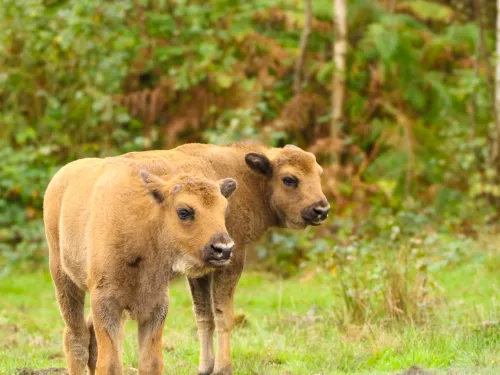
Welcome “two” the herd
Ground-breaking wilding project welcomes the birth of two female bison calves
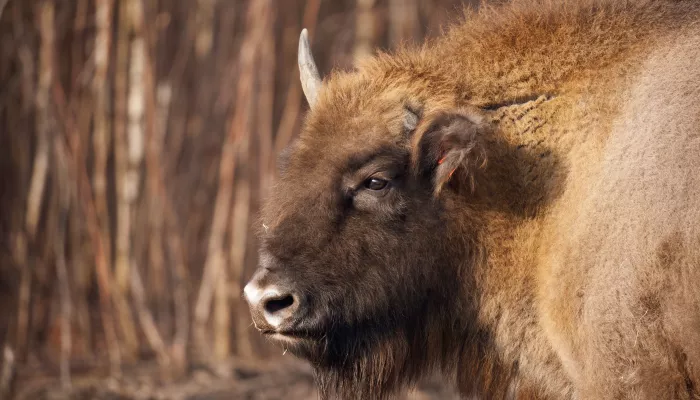
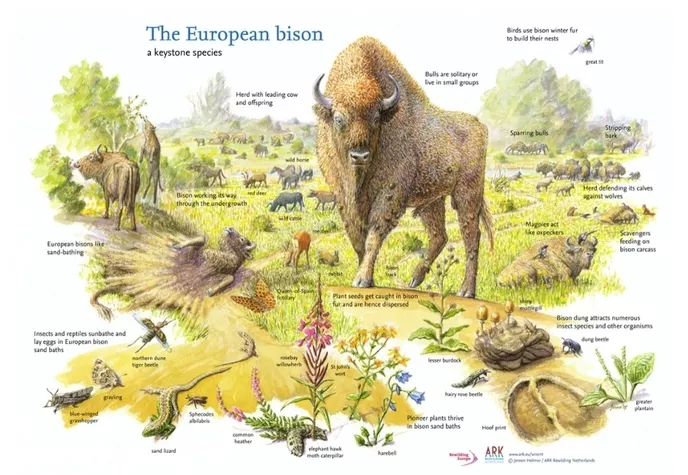
European Bison disappeared from Romania over 200 years ago. WWF Romania and Rewilding Europe have been working together to reintroduce this iconic species back to the Southern Carpathian mountains. Since the first translocation in 2014, more than 100 Bison have been brought back to the Tarcu Mountains at the southwestern end of the mountain range 1. Today the population has grown to over 170 animals, one of the largest free-roaming populations in Europe.
It turns out that European Bison can play an astonishing role in capturing carbon to mitigate the impact of climate change. With the help of a new computer model 2 developed at the Yale School of the Environment in the US, in cooperation with the Global Rewilding Alliance3, it is now possible to calculate the additional amount of atmospheric CO2 that wildlife species help to capture and store in the soils through their interactions within ecosystems.
In new research, it has been found that a group of 170 European Bison, through their grazing in an area of 48 km2 of grasslands in a wider landscape of 300 km2 help to capture approximately an additional 54,000 tonnes of carbon per year, nearly 10 times more than without the Bison. This corresponds to the CO2 released by up to 84,000 average American petrol cars annually.
These results are the first specific output from a model developed at Yale University, building on previous work published in top peer-reviewed journals such as Nature Climate Change4, that highlights the potential of rewilding for addressing climate change. The Yale/GRA ACC model2 is now being applied to landscapes around the world with partners of the Global Rewilding Alliance, with the results of the European Bison in the Southern Carpathians being the first output.
Maheen Khan, Climate Lead for WWF-Netherlands, which together with Rewilding Europe supported the climate study with WWF Romania, Yale and the Global Rewilding Alliance, said: “These astonishing results show the potential for reintroduced wild animals to supercharge the ability of ecosystems to draw down atmospheric carbon. Rewilding in this way is now clearly a major option for policymakers in the face of rapidly accelerating climate change.”
Known locally as Wisent, the Bison herd does not receive any supplementary feeding, which ensures that they disperse and behave as naturally as possible. Through their grazing and browsing, the Bison help to maintain a biodiversity-rich mosaic of forests, scrub and grasslands, as well as numerous micro-habitats, which host a wide range of plant and animal species. The landscape holds the potential for the population to grow to 350-450 animals as the population expands geographically.
The return of the European Bison has also sparked new nature-based tourism and entrepreneurial innovation around rewilding, which are benefitting local people and helping to build support for, and pride in, the Bison’s presence. Successful co-existence with the Bison is also enabled by committed and experienced field teams that work closely with local municipalities and others to develop ‘Bison-smart communities’. Such inclusive approaches are essential to successful rewilding initiatives and other nature-based solutions to climate change.
In close collaboration with local communities, businesses and governments, Rewilding Europe is developing a series of “Rewilding Landscapes” across the continent, including the Carpathians.
Frans Schepers, co-Founder and Executive Director of Rewilding Europe said: “This area is still rich in wildlife, but until recently it had been missing one of its key animals - the European Bison. This is now the largest reintroduction of the Bison in Europe, breathing new life into this region and providing new opportunities for a nature-based economy. As a keystone species, Bison unlock a cascade of benefits in the ecosystem, but the scale of this result is a really nice surprise, supporting the importance of bringing back wildlife into European landscapes.”
Karl Wagner, Managing Director of the Global Rewilding Alliance said: “These results from the Yale/GRA ACC model show the potential of addressing simultaneously the existential challenges of climate change and biodiversity extinctions. Allowing a comeback of nature will significantly increase the drawdown of carbon from the atmosphere while bringing back functional ecosystems and the range of ecosystem services they provide. Why look for expensive, unproven technological approaches when a natural and cost-effective solution is at hand?”
Professor Oswald Schmitz of Yale School of Environment, lead author of the report and developer of the model said: “Our work reveals that wild animals could substantially increase an ecosystem’s carbon budget by 60–95%, and sometimes even more, relative to cases where those animals are absent. This could potentially protect and enhance ecosystem carbon capture and storage globally by at least 6.4 billion tonnes per year. This amount rivals each of the IPCC’s top five steps for reducing net emissions expeditiously, including a rapid transition to solar and wind technology 5.”
Rewilding Europe aims to make Europe a wilder place, where the application of rewilding principles, models and tools is delivering measurable, demonstrable, and sustained benefits for nature and people. Rewilding Europe does this by demonstrating the benefits of wilder nature through the rewilding of diverse European landscapes, including the Southern Carpathians of Romania.
The mission of Global Rewilding Alliance is to help build the global rewilding movement with the aim to mainstream rewilding in science, policy and practice globally by 2030. The Alliance is a partnership of rewilding organisations, with 180+ Alliance Partners worldwide working across all continents. Together, they are currently helping to influence the rewilding of 2.2 million km2 of land and sea in 124 countries (an area greater than France, Germany, Italy, Spain and the UK combined).
Rewilding Europe: Laurien Holtjer, Director of Engagement and Public Relations: [email protected] (NL)

Ground-breaking wilding project welcomes the birth of two female bison calves
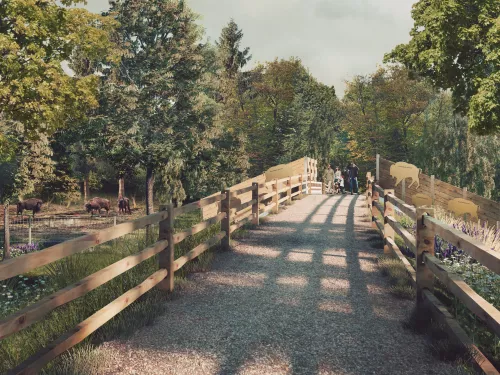
The bridges will allow the UK’s only wild bison herd access to 200 hectares of West Blean and Thornden Woods in Canterbury.
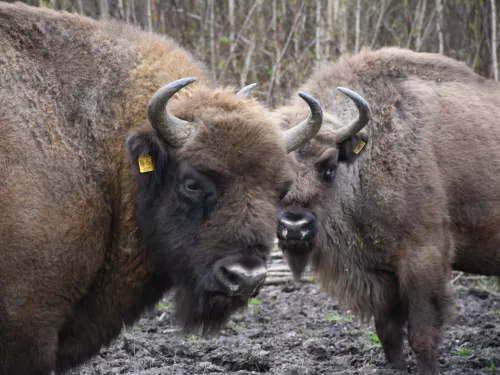
Since 2022, the UK has sworn in four new prime ministers, the interest rate has risen from 0.25% to 5.25%, and, as of the 18th July, bison have been in the Blean for two whole years.